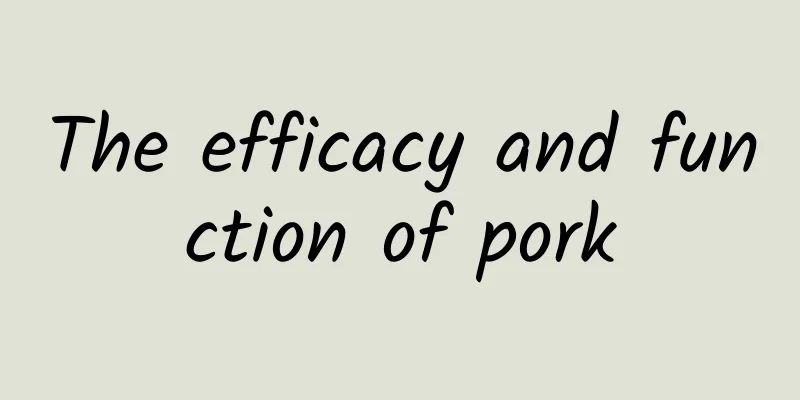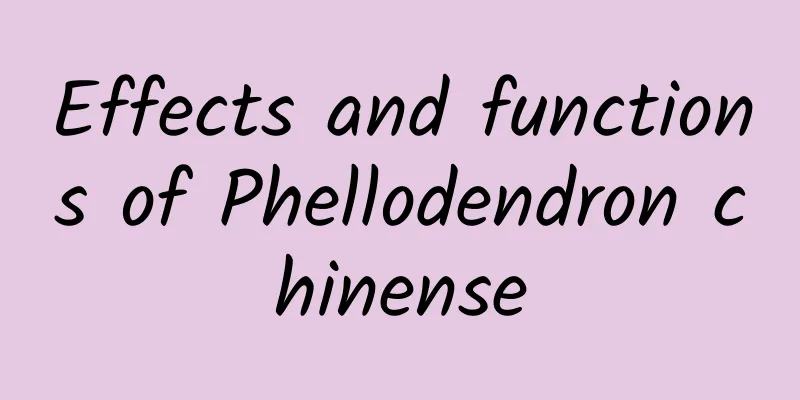What are the effects of moxibustion of Polygala?

|
As people’s awareness of traditional Chinese medicine becomes higher and higher in modern society, many friends’ first reaction after getting sick is to take traditional Chinese medicine. Because traditional Chinese medicine has the effect of treating both the symptoms and the root cause, and the toxic side effects it brings to people's bodies are relatively small, it is widely loved and respected by people. So what are the effects of Chinese medicine moxibustion on Polygala? In response to this question raised by everyone, I would like to invite my friends to discuss it with me in the following time. Other names: Polygala meat, Polygala tube. Source: The dried root bark or roots of Polygala tenuifolia, Polygala siberica and Polygala latifolia, all of the Polygalaceae family. Grows wild on hillsides, in bushes and on roadsides. Plant morphology: Polygala tenuifolia: perennial herb, 25-40 cm tall, with cylindrical roots, long and thick, slightly curved, light yellow-brown. The stem base is earthy yellow with a slight woodiness. Most of the stems grow in clusters on the stem base. They are cylindrical, gray-green, oblique or straight, about 1 mm in diameter, and nearly smooth. Leaves are alternate, linear, 1-3 cm long, 1-2 mm wide, sessile, and entire. The raceme is terminal; the flowers are small, with long petioles, light blue-purple, 3 petals, 1 of which is larger and has a filamentous appendage at the tip; there are 5 sepals, which are not connected, 3 of which are smaller and 2 are petal-shaped, green-white with purple edges. The capsule is flat, obcordate, with narrow wings on the edges, smooth and hairless. Broad-leaved Polygala: The stem is covered with short procumbent hairs. The leaves are ovate-lanceolate, 3 to 6 mm wide. The fruit is surrounded by short eyelashes. Origin: Mainly produced in Shanxi, Shaanxi, Henan, Hebei and other places. In addition, it is also produced in Shanle, Inner Mongolia, Anhui, Hubei, Jilin, Liaoning and other places. Collection and processing: Dig up in spring and autumn, remove the remaining stems, fibrous roots and soil, and dry them slightly. Select thick and neat ones, place them flat on a board, and rub them back and forth until the skin and flesh are separated from the core, remove the core, and dry them in the sun. This is called "Polygala tube"; use a stick to crack the smaller roots and remove the core. Because the skin is not in a tube shape, it is called "Polygala meat". Those without the core removed are called "Polygala stick". Identification of properties: The Polygala tube is long and slightly curved, shaped like an earthworm, about 3 to 13 cm long and about 0.3 to 1.3 cm in diameter. The outer skin is grayish yellow, with dense and deep transverse wrinkles or cracks all over. It is brittle, easy to break, with a yellow-white cross section and is hollow. It has a faint smell, tastes bitter and slightly spicy, and has a tingling effect on the throat. The flesh of Polygala tenuifolia is mostly broken and thin. Polygala tenuifolia is a small stick with a hard core in the center. The best ones are those with thick tube, thick meat, fine skin, tender color, and clean wood core. Main ingredients: Contains polygala saponin, which after hydrolysis generates polygala saponin A and polygala saponin B, and also contains polygala alcohol and onsicin. Efficacy and functions: calming, expectorant and anti-inflammatory. 1. Expectorant. It is a nausea expectorant. The saponins it contains can stimulate the gastric mucosa and cause mild nausea, thereby reflexively increasing bronchial secretions, but the effect is weak. 2. Antibacterial. In vitro tests showed that it had significant inhibitory effects on Gram-positive bacteria, Shigella dysenteriae, and Salmonella typhi. Preparation: Boil with licorice water. The above paragraphs have given us a good introduction to the traditional Chinese medicine of moxibustion of Polygala tenuifolia. I sincerely hope that my friends can read the above content carefully, so that they will have a deeper understanding and more proficient mastery of its efficacy. Of course, I still want to tell you that we must understand some Chinese medicines that are incompatible with Moxibustion Polygala, so that we can avoid their simultaneous occurrence when taking them. |
<<: What are the effects of traditional Chinese medicine roasted Polygala?
>>: Can Polygala tenuifolia enhance male sexual function?
Recommend
How to store Chinese medicine after decocting it?
When boiling Chinese medicine, many people are tr...
Polluting the environment? Destroying the ecology? Fertilizers feel wronged
Since the birth of the first chemical fertilizer,...
Can drinking a cup of honey water every day really improve your skin and relieve constipation? Don’t worry, here’s the truth!
In daily life, we often hear various tips for kee...
What is the significance of biodiversity to humans?
Yesterday, the 15th meeting of the Conference of ...
The efficacy and function of Sedum
Sedum is a very common Chinese medicine and also ...
The efficacy and function of the claw grass
Many people are not very clear about the herb, so...
The 100th launch! The Long March 4 series carrier rocket successfully launched the Fengyun-3-06 satellite
At 11:47 on August 3, 2023, my country successful...
The efficacy and function of Fritillaria thunbergii
I believe many people are familiar with the Chine...
I didn't expect that you've been riding your bike wrong all these years.
China is a kingdom of bicycles. If you observe fo...
There is a reason why firefighters ask you to lose weight! Because you are over 140 pounds...
In fire rescue, Firefighters will adopt different...
Baynote: US e-commerce economics and holiday promotions data – Infographic
Like China, the holiday economy is very valuable....
The efficacy and function of Salvia miltiorrhiza
Long-leaf Salvia miltiorrhiza is a common Chinese...
What are the main effects of Momordica charantia
Momordica cochinchinensis is a plant that grows o...
The movable type printing in history textbooks is still in use in this small village!
Wood type printing Author: Lei Biyu Source: "...









